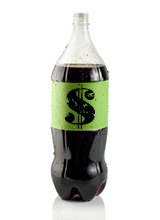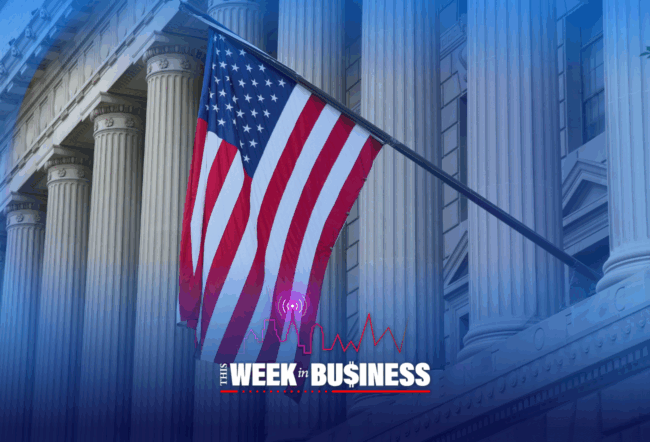The taste of soda may be sweet, but the potential consequences of those empty calories — obesity, diabetes, higher mortality and skyrocketing health care costs — are not. In response, many states and cities in recent years have proposed taxes or other initiatives intended to reduce consumption of sodas and other sweetened drinks.
One proposal commanding a lot of attention is New York Mayor Michael Bloomberg’s proposed “soda ban,” which would prohibit the sale of sweetened beverages greater than 16 ounces — including sodas, sports drinks and sweetened coffees and teas — in restaurants, food carts, delis and concession stands at movie theaters, stadiums and arenas. The “ban,” which is scheduled to be voted on by New York’s board of health this week, would not apply to soda sold in supermarkets or convenience stores.
“There is a huge likelihood that the ‘soda ban’ will be the next McLean” — a healthier burger option added to the McDonald’s menu in 1991 that failed to catch on with customers, says Brian Wansink, a Cornell marketing professor and director of the school’s Food and Brand Lab. “For 10 years after [that product was introduced], fast food companies were hesitant to come out with new [health-conscious] products because they didn’t want to be the next McLean.”
The soda ban is a similar gamble, he notes, because “it’s visible, it’s controversial and if it doesn’t overwhelmingly succeed, people will look at all subsequent public health efforts with tremendous disdain and distrust.” And the odds are not stacked in favor of the ban, or a growing number of efforts in other cities to tax sugary beverages, Wansink adds. As evidence, he cites 150 years of economic research that shows “if people really want something, they are going to find a way to buy what they want.”
Some experts argue that bans or taxes could give consumers pause — either due to a raised consciousness about the health risks associated with too much soda, or, in the case of a tax, because the drinks will become more expensive. But others worry that such methods of curbing obesity will have a number of unintended consequences — even hurting low-income Americans, many of whom already suffer from a lack of affordable food options.
“It’s a Catch-22,” says University of Pennsylvania nursing and epidemiology professor Karen Glanz. “The [food] industry, in this case, is selling legal products that we can’t say are ‘all bad,’ as we could say about tobacco…. If [health advocates] don’t team up with the food industry,” and instead continue to just push back at it, “[the industry] will become more committed to undermining health initiatives.”
Unlike the soda ban, levying taxes on sugary drinks serves a second purpose — combating many cities’ budgetary woes. “The good news is that in some ways, sweetened-beverage taxes can help” to mitigate health and budget problems, notes Wharton health care management professor Mark Pauly. But the effect will be limited. The taxes “won’t raise all the money that cities need nor make a major dent in the obesity problem.”
Sharing the Pain
Currently, 30 states levy a sales tax, averaging about 5%, on soda purchases. In Richmond, Calif., city officials are taking a different approach: Included on the ballot in November will be a proposed penny-per-ounce excise tax on sugar-sweetened drinks sold, served or otherwise provided by stores, restaurants and other businesses. The proposal is structured as a business license fee, meaning it would be up to merchants to decide how, or if, they would pass the tax on to consumers. If voters approve it, the initiative would be the first of its kind in the U.S., according to The Wall Street Journal. Other cities may follow Richmond’s lead: Most recently, the city of El Monte, Calif., has also placed a soda tax measure on its November ballot.
Opponents of the bills in Richmond and El Monte, led by the American Beverage Association (ABA), have argued that the legislation would hurt low-income residents and local businesses, while unfairly targeting only one in a sea of unhealthy products that are for sale on the nation’s grocery and convenience store shelves. According to Reuters, critics have also noted that while obesity rates in the U.S. are going up, overall consumption of full-calorie soda has declined.
According to Kelly D. Brownell, director of the Rudd Center for Food Policy & Obesity at Yale University, an excise tax would conceivably affect the sticker price of sugary beverages, which could make it more effective than a sales tax at reducing consumption. “With a sales tax, you don’t get to see the added cost until you get to the cash register,” says Brownell, who, in a 1994 op-ed in The New York Times, was one of the first to bring the idea of a tax on unhealthy foods into a public forum. However, Glanz notes that “whether the tax actually achieves a reduction in sugary soda purchases may depend on how it is implemented.” Facing pressure from the beverage industry, retailers may purposely undermine the taxes — for example, by passing them on through increased prices for vegetables or other staples while keeping the price of sugary drinks low. “I don’t think the laws would [include] any accountability to the public or government as to how they recover the ‘back-end tax,'” she says.
The American Beverage Association has spent millions to fight soda taxes proposed across the country. In Richmond — which, along with El Monte, has one of California’s higher rates of obesity in children — the ABA has funded billboards criticizing the bill and pledged to spend more to fight its passage, Reuters reported. The group is backing a lawsuit in El Monte that challenges the language of that city’s proposed soda tax.
But big beverage companies — many of them multinational firms with diverse product lines — may have less to fear from taxes or bans on soda than their efforts to fight them might indicate, according to Wharton finance professor Robert Inman. “If I’m Pepsi, and if you start taxing soda, I will produce non-sugary drinks like water,” Inman states. “How many [net] jobs were lost because of cigarettes? Phillip Morris (now Altria Group) … [went on to sell] cigarettes in Africa.”
Making a Difference — But at What Cost?
Too many sugary drinks are just one factor contributing to the nation’s obesity problem, but Brownell says that the beverages are an obvious target for people trying to mitigate the problem through legislation. “One, it’s the single-greatest source of added sugar in the American diet. Two, it offers no nutritional value…. Three, there is rock-solid proof linking consumption of these beverages to obesity and diabetes. Four, the body doesn’t recognize calories when they are delivered in liquids. We don’t feel full.”
He predicts that the impact of a soda ban or tax would be similar to what happened with laws aiming to decrease tobacco use. “Youth were particularly affected by tobacco taxes because they had less money than adults did. That’s a public health bonus, because if you discourage people from bad habits when they are young, you can prevent a lifetime of bad habits.”
For other experts, however, the potential benefits of such laws are less clear. The calories contained in a large soda alone “don’t explain the growth in obesity,” according to Jay Bhattacharya, a professor of medicine at Stanford University. Quoting statistics from the USDA (United States Department of Agriculture), Bhattacharya notes that “people eat about 500 more calories [a day] than they did 30 years ago. In 1975, we ate an average of 2,250 calories a day per person, and in 2000 we ate an average of 2,750 calories per person per day.” By raising the price of food, he adds, “we reduce what people consume. The problem is there are other high-calorie, empty-nutrition foods [besides soda]. Focusing on one item is unlikely to address the obesity problem.”
Laws that spur people to drink less soda could also prompt them to replace one bad habit with another. “What if you buy tea and put sugar in it?” Pauly asks. “What if you make a milkshake with two non-taxed items? [Then] what do you tax? People will always try to find substitutes.”
The proposals on the table in New York, California and elsewhere merely try to curb the consumption of one type of food, but they don’t necessarily steer consumers toward a healthier choice, notes David Asch, a Wharton health care management professor and executive director of the Leonard Davis Institute of Health Economics. “[Everyone] can agree that the correct amount of cigarettes is [none.] But even though we have an obesity epidemic, the correct answer is not for everyone to stop eating,” he states. “For that reason, people have different views about full-calorie soda than they do about tobacco.”
Everybody’s Problem?
Many opponents fear that laws that try to govern what people eat and drink will lead to a “nanny state” in which consumers are not permitted to exercise their own free will. “The conservative argument is: If people want to develop damaging lifestyles, let them adopt them,” Inman says. “My reply is: [Because of] the cost of obesity, you are raising [health insurance premiums for everyone.] It’s plausible that you have a right to free choice, as long as it doesn’t affect other people. But it does.”
Echoing Inman, Glanz notes, “We have all kinds of laws that discourage people from doing various things [that are bad for them], yet people get up in arms about [taxes on] food. They don’t remember that we already have a lot of government interference in what we eat,” such as laws governing food and restaurant safety.
But Bhattacharya says that arguments in favor of a tax overlook any long-term consequences. “We don’t want to impose taxes on people who are food insecure,” he says. “It’s a regressive policy that tends to fall hardest on the poor…. It’s not necessarily wrong; we just have to think about its effects.”



